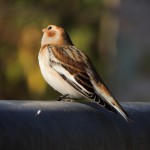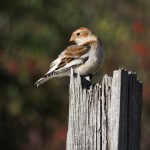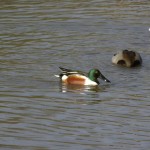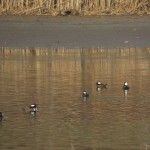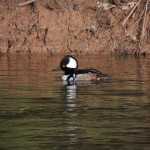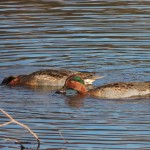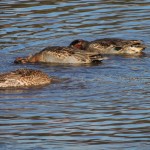30 October 2014. Burlington ON. The study of birds, like many a generally worthwhile pursuit, is a constant learning experience. This morning included a teachable moment that reminded me just how much I don’t know.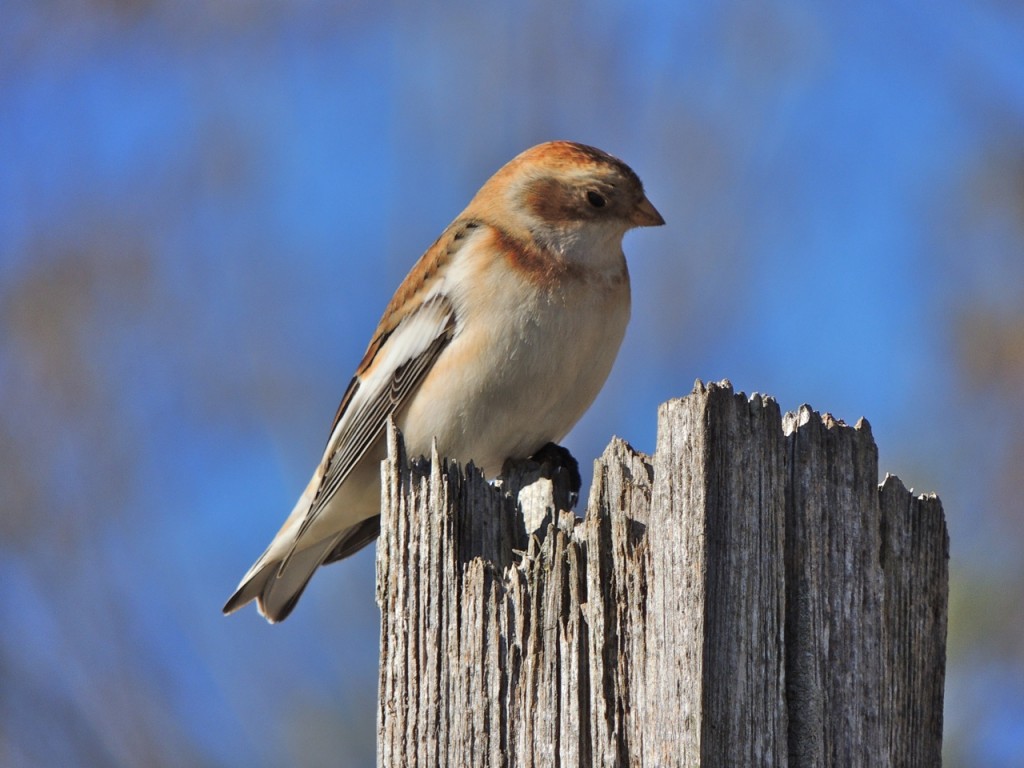
Towards the end of a satisfying birding morning we came upon a solitary Snow Bunting that left me almost speechless. I was sure, certain, that we’d found a bird so far out of season as to be at least a mild sensation. After all, Snow Buntings are birds of mid-winter, January and February, they’re birds of hard cold days when the landscape is stark, hostile and windswept, not mild and still leafy as it was today.
I could hardly wait to get home to post a “Guess what I saw!” sighting on our local bird-reports line. But first (at least I’ve learned to look before you leap too far)….a precautionary check of the bible of local birding, Robert Curry’s Birds of Hamilton and Surrounding Areas. Here’s what I read; “We know them as winter visitors along the shores of Lake Ontario and Hamilton Harbour when they first arrive in October, and later in open fields as snow cover develops… In late October, flocks of arriving Snow Buntings sweep along the Lake.” Curry reports mean fall arrival dates in the last week of October. Well, yes, but… Oh never mind, it was a delightful sighting, it made my day (Bird of the Day) and it taught me something I didn’t know; Snow Buntings arrive here in October; look for them. Here’s a few more shots of it in a gallery.
It was not the only highlight of a pleasant two-hour walk through some of the richest, most varied habitat in our region. It started out a little flat with Slate-colored Juncos, White-throated Sparrows and Black-capped Chickadees, nothing wrong with any of those, but nothing all that newsworthy about them either. I had the company of a couple who are fairly new to birding and Marion was pleased when I found a small flock of Eastern Bluebirds, a first for her. A little later we watched a group of Cedar Waxwings feasting on the berries of Tartarian Honeysuckle and were surprised to see a Great Blue Heron perched on a riverside branch, uncharacteristically ambivalent about our closeness. For a while I wondered if it had managed to get itself into a place without an easy exit and therefore making it difficult to fly off, Great Blues are usually quick to distance themselves from any possible human threat.
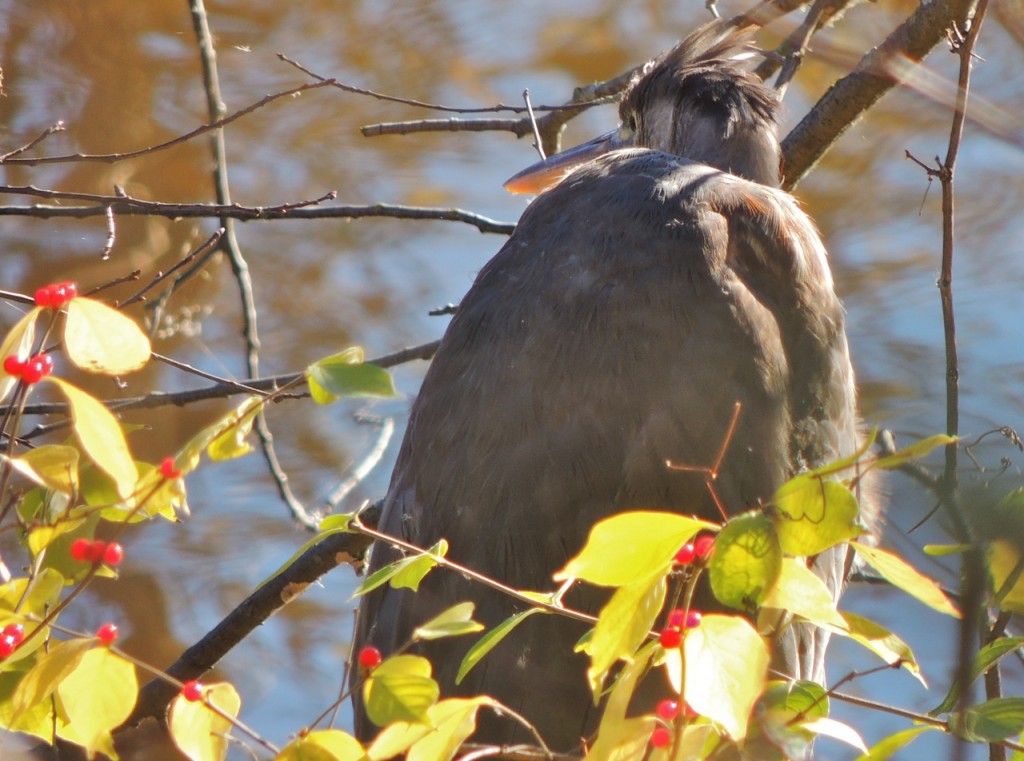
Reaching an area of shallow water and mudflats, we were treated to a couple of small flotillas of Hooded Mergansers diving for whatever is usually found in shallow silty waters. The males were very spectacular in their striking winter/breeding plumage, especially with their hoods raised. There were Mallards, Northern Shovelers and Green-winged Teals too. The males of these latter three were in different stages of their fall moults which will take them into full breeding plumage. Mallards are now back in full look-at-me plumage, Northern Shovelers part-way there and the Green-winged Teals quite a long way from their Sunday best.
All of the above-mentioned ducks are in this gallery, but you’ll have to be on the website to see them, you’ll not see them if you’re reading this as an email.

